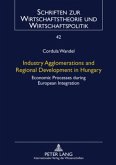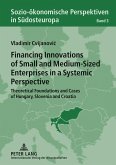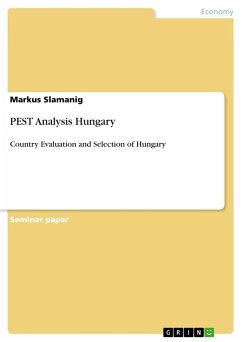Hungary: Towards a Market Economy offers the most recent and up-to-date assessment of the contemporary Hungarian economy, and follows its evolution in the immediate aftermath of the revolutions in Central and Eastern Europe. Part I describes the macroeconomy, the evolution of monetary policy, the link between the exchange rate and inflation, the inability of fiscal policy to come to terms with public debt and deficits, and the evolution of the underground economy. Part II focuses on the microeconomy; the consolidation of the banking sector, the evolution of corporate governance and an analysis of the profitability of export-orientated firms. The final part assesses the labour market and the system of welfare. Hungary: Towards a Market Economy is the latest in the successful sequence of volumes on major topics in international economics published under the auspices of the Centre for Economic Policy Research, of interest to both policy-makers and specialists.
Table of contents:
Preface: the hidden Hungarian miracle László Halpern and Charles Wyplosz; Part I. Macroeconomic Policy: 1.1. Fiscal difficulties in the transition: the case of Hungary between 1990 and 1995 Pal Gaspar; Discussion David Begg; 1.2. The interest rate transmission mechanism in Hungary, 1991-1995 Balazas Vilagi and Janos Vincze; Discussion Giancarlo Perasso; 1.3. The nature of Hungarian inflation Istvan Hamecz, Janos Vincze and Istvan Zsoldos; Discussion Ratna Sahay; 1.4. The hidden economies of Visegrad countries in international comparison: a household electricity approach Mario Lacko; Discussion Michael A. Landesmann; Part II. Industrial Structure: 2.1. Corporate governance in the transition - the case of Hungary: do new structures help create efficient ownership control Adam Torak: 2.2. Corporate performance in the transition: econometric analysis of Hungarian exporting firms, 1985-1994 László Halpern and Gabor Korsi; Discussion Jan Svejnar; 2.3. Hungary's Ponzi game László Szakadat; Discussion Jerome Sgard; Part III. Labour Markets: The Minimum Wage in Hungary: Subsistence minimum and/or bargaining tool? Jeno Koltay; Discussion George Kopits; 3.2. Welfare institutions and the transition: in search of efficiency and equity Ivan Csaba and Andras Semjen; Discussion Christine H. Allison; Regional unemployment rate differentials in Hungary, 1990-1995: the changing role of human capital Arpad Abraham and Gabor Kertesi; Appendix 1: The determinants of individual chances of unemployment (logit estimation); Appendix 2: Relationship between the Gypsy ratio and the migration balance Michael Burda.
The latest volume in the Cambridge/CEPR sequence offers the most recent and up-to-date assessment of the Hungarian economy, combining intimate local knowledge with up-to-date modes of economic analysis. It will be of interest to all those following the process of economic transition, whether academic researchers, students, policy-makers or analysts.
The most up-to-date assessment of the contemporary Hungarian economy.
Hinweis: Dieser Artikel kann nur an eine deutsche Lieferadresse ausgeliefert werden.
Table of contents:
Preface: the hidden Hungarian miracle László Halpern and Charles Wyplosz; Part I. Macroeconomic Policy: 1.1. Fiscal difficulties in the transition: the case of Hungary between 1990 and 1995 Pal Gaspar; Discussion David Begg; 1.2. The interest rate transmission mechanism in Hungary, 1991-1995 Balazas Vilagi and Janos Vincze; Discussion Giancarlo Perasso; 1.3. The nature of Hungarian inflation Istvan Hamecz, Janos Vincze and Istvan Zsoldos; Discussion Ratna Sahay; 1.4. The hidden economies of Visegrad countries in international comparison: a household electricity approach Mario Lacko; Discussion Michael A. Landesmann; Part II. Industrial Structure: 2.1. Corporate governance in the transition - the case of Hungary: do new structures help create efficient ownership control Adam Torak: 2.2. Corporate performance in the transition: econometric analysis of Hungarian exporting firms, 1985-1994 László Halpern and Gabor Korsi; Discussion Jan Svejnar; 2.3. Hungary's Ponzi game László Szakadat; Discussion Jerome Sgard; Part III. Labour Markets: The Minimum Wage in Hungary: Subsistence minimum and/or bargaining tool? Jeno Koltay; Discussion George Kopits; 3.2. Welfare institutions and the transition: in search of efficiency and equity Ivan Csaba and Andras Semjen; Discussion Christine H. Allison; Regional unemployment rate differentials in Hungary, 1990-1995: the changing role of human capital Arpad Abraham and Gabor Kertesi; Appendix 1: The determinants of individual chances of unemployment (logit estimation); Appendix 2: Relationship between the Gypsy ratio and the migration balance Michael Burda.
The latest volume in the Cambridge/CEPR sequence offers the most recent and up-to-date assessment of the Hungarian economy, combining intimate local knowledge with up-to-date modes of economic analysis. It will be of interest to all those following the process of economic transition, whether academic researchers, students, policy-makers or analysts.
The most up-to-date assessment of the contemporary Hungarian economy.
Hinweis: Dieser Artikel kann nur an eine deutsche Lieferadresse ausgeliefert werden.








